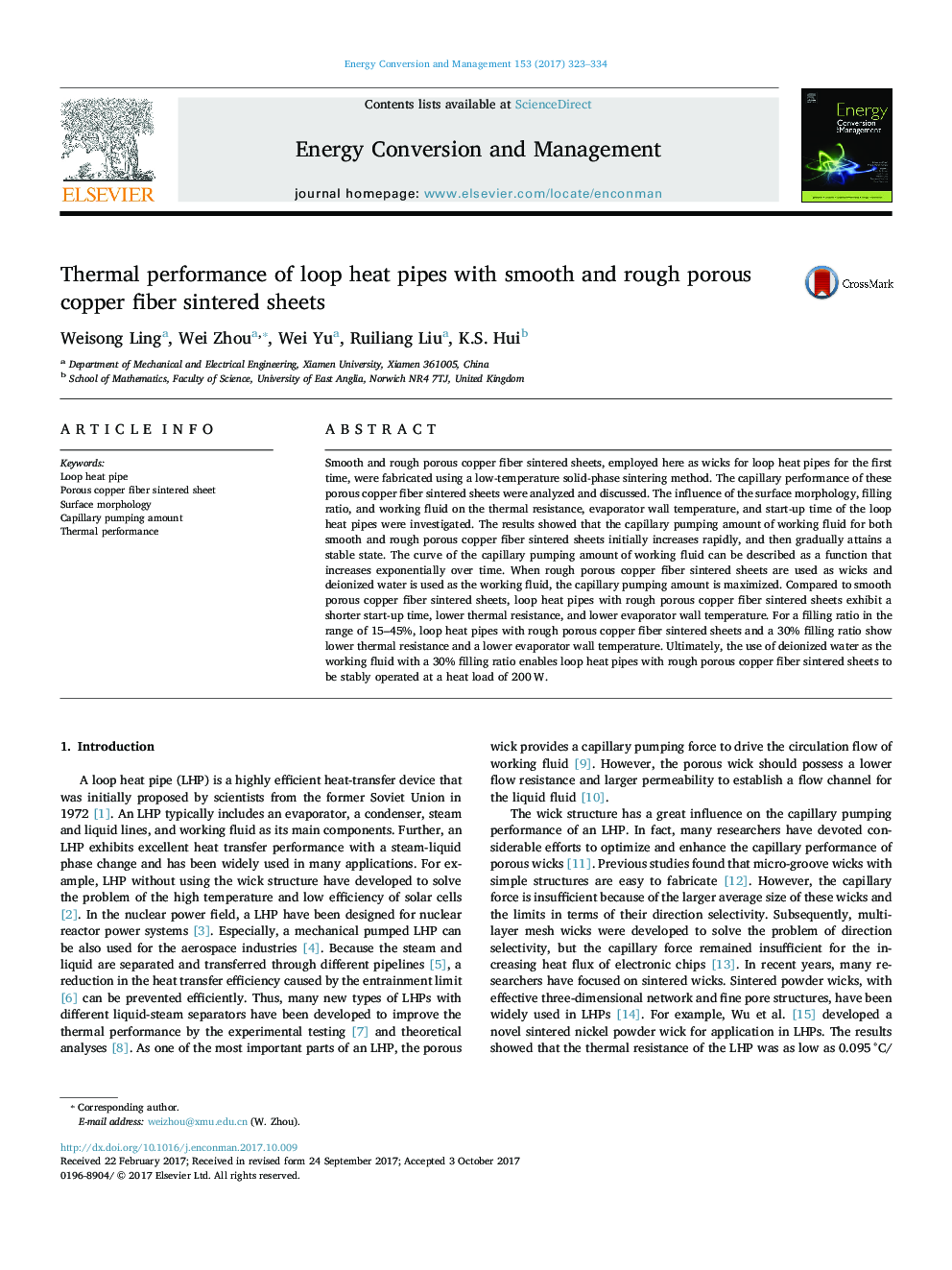| کد مقاله | کد نشریه | سال انتشار | مقاله انگلیسی | نسخه تمام متن |
|---|---|---|---|---|
| 5012184 | 1462809 | 2017 | 12 صفحه PDF | دانلود رایگان |
عنوان انگلیسی مقاله ISI
Thermal performance of loop heat pipes with smooth and rough porous copper fiber sintered sheets
ترجمه فارسی عنوان
عملکرد حرارتی لوله های حرارتی حلقوی با ورقه های صلب و صاف و صاف و متخلخل،
دانلود مقاله + سفارش ترجمه
دانلود مقاله ISI انگلیسی
رایگان برای ایرانیان
کلمات کلیدی
حلقه لوله حرارتی، ورق های متخلخل بر روی فیبر شیشه ای، مورفولوژی سطح، مقدار پمپاژ مویرگی، عملکرد حرارتی،
موضوعات مرتبط
مهندسی و علوم پایه
مهندسی انرژی
انرژی (عمومی)
چکیده انگلیسی
Smooth and rough porous copper fiber sintered sheets, employed here as wicks for loop heat pipes for the first time, were fabricated using a low-temperature solid-phase sintering method. The capillary performance of these porous copper fiber sintered sheets were analyzed and discussed. The influence of the surface morphology, filling ratio, and working fluid on the thermal resistance, evaporator wall temperature, and start-up time of the loop heat pipes were investigated. The results showed that the capillary pumping amount of working fluid for both smooth and rough porous copper fiber sintered sheets initially increases rapidly, and then gradually attains a stable state. The curve of the capillary pumping amount of working fluid can be described as a function that increases exponentially over time. When rough porous copper fiber sintered sheets are used as wicks and deionized water is used as the working fluid, the capillary pumping amount is maximized. Compared to smooth porous copper fiber sintered sheets, loop heat pipes with rough porous copper fiber sintered sheets exhibit a shorter start-up time, lower thermal resistance, and lower evaporator wall temperature. For a filling ratio in the range of 15-45%, loop heat pipes with rough porous copper fiber sintered sheets and a 30% filling ratio show lower thermal resistance and a lower evaporator wall temperature. Ultimately, the use of deionized water as the working fluid with a 30% filling ratio enables loop heat pipes with rough porous copper fiber sintered sheets to be stably operated at a heat load of 200 W.
ناشر
Database: Elsevier - ScienceDirect (ساینس دایرکت)
Journal: Energy Conversion and Management - Volume 153, 1 December 2017, Pages 323-334
Journal: Energy Conversion and Management - Volume 153, 1 December 2017, Pages 323-334
نویسندگان
Weisong Ling, Wei Zhou, Wei Yu, Ruiliang Liu, K.S. Hui,
